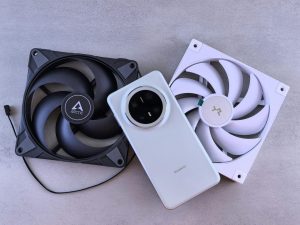The Essential Guide to Understanding Computer Bus Architectures
In the world of computers and technology, there are countless components and architectures that work together to make our devices function. Among these important elements is the computer bus architecture. It is a fundamental part of any computer system and plays a crucial role in its performance. Whether you’re a computer enthusiast, a student, or a professional in the tech industry, understanding computer bus architectures is essential. In this comprehensive guide, we will delve into the world of computer bus architectures and shed light on all you need to know about this vital component.
The Basics of Computer Bus Architectures
Before we dive into the details, let’s start with the basics. A computer bus architecture is a communication system that allows different components of a computer to communicate with each other. It functions like the nervous system of a computer, carrying data and information between various hardware devices. The term “bus” is used because it resembles a bus or a pathway that connects different parts of the computer together.
Computer bus architectures have been around since the early days of computing, but they have evolved significantly over time. Prior to the 1980s, most computers used a single bus architecture, where all the components were connected to a single bus. However, with the advancement of technology and the need for faster and more efficient data transfer, the concept of multiple bus architectures was introduced.
Types of Computer Bus Architectures
Today, there are three main types of computer bus architectures – the System Bus, the Expansion Bus, and the Input/Output (I/O) Bus.
1. System Bus
The System Bus, also known as the front-side bus (FSB), is the main bus architecture in a computer system. It connects the CPU (Central Processing Unit) to the main memory (RAM) and other essential components such as the hard drive and the graphics card. It is responsible for transmitting data and instructions between these components.
The System Bus also includes two other important buses – the Address Bus and the Data Bus. The Address Bus carries memory addresses, which indicate the location of data in the memory. The Data Bus carries the actual data being transferred between the components.
2. Expansion Bus
The Expansion Bus is also known as the Input/Output (I/O) Bus and is responsible for connecting peripheral devices to the computer, such as printers, scanners, and external hard drives. Unlike the System Bus, the Expansion Bus is not directly connected to the CPU. Instead, it uses a controller called the Input/Output Controller (IOC) to communicate with the CPU and handle data transfer between the peripheral devices and the computer.
3. Input/Output (I/O) Bus
The Input/Output (I/O) Bus is a specialized bus that is designed to handle data transfer between input/output devices, such as keyboards, mice, and monitors, and the computer. Unlike the Expansion Bus, the I/O Bus is connected directly to the CPU and can transfer data at a higher speed. It is commonly used in modern computers to handle high-speed peripherals that require fast data transfer.
The Importance of Understanding Computer Bus Architectures
Now that we have a basic understanding of the different types of computer bus architectures, let’s take a look at why it is essential to understand them.
First and foremost, understanding computer bus architectures can help you troubleshoot issues with your computer system. By knowing how different components are connected and how they communicate with each other, you can identify and fix any problems that may arise.
In addition, knowledge of computer bus architectures is crucial for those working in the tech industry. It is an essential topic in hardware design and development, and understanding it is essential for building efficient and high-performance computer systems.
In Conclusion
Computer bus architectures are an essential component of any computer system. By serving as the communication pathways between different hardware devices, they play a crucial role in the performance of our devices. With the constant advancement of technology, the complexity of these architectures continues to evolve. However, by understanding the basics and keeping up with the latest developments, we can ensure that our computer systems continue to function at their best.










